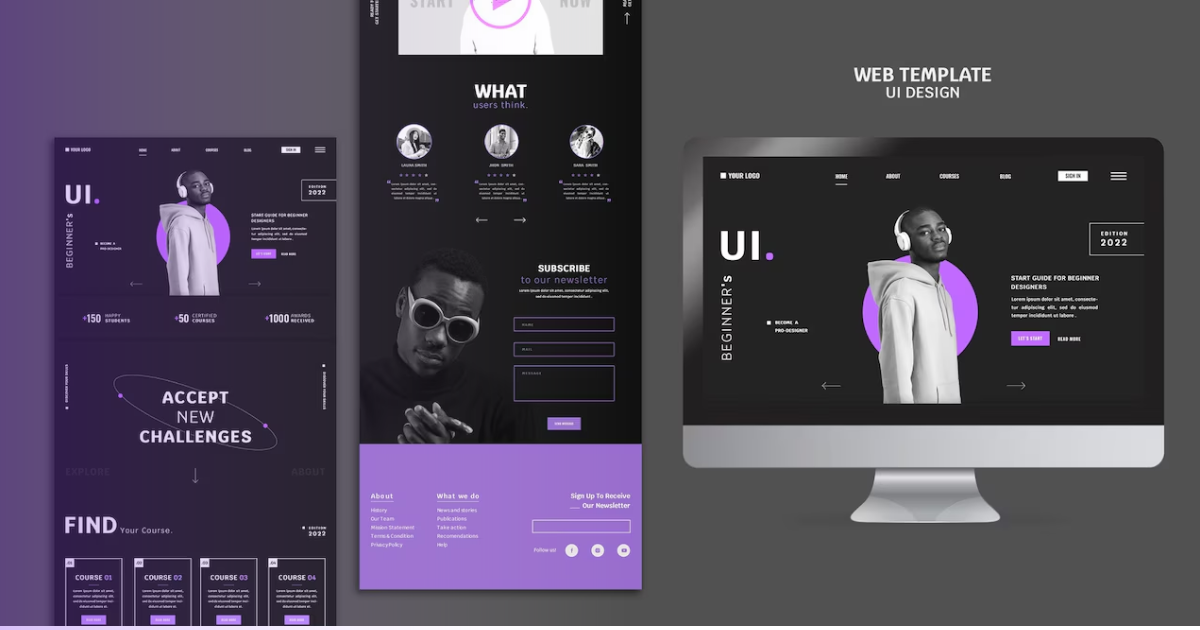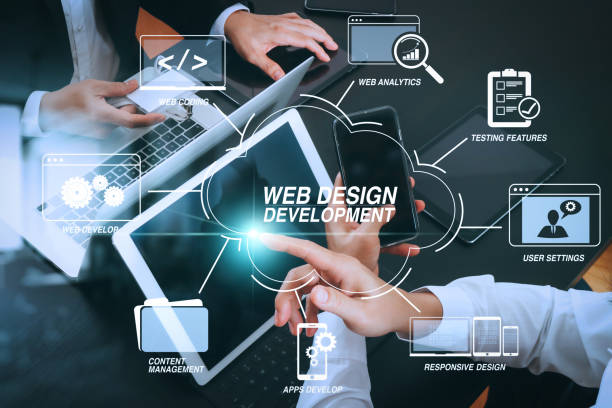Aligned Position Web Design: Building Beautiful and Functional Websites for Your Business
Aligned Position Web Design: Building Beautiful and Functional Websites for Your Business
Blog Article
The Finest Sorts Of Website Design to Enhance Individual Experience and Interaction
In the ever-evolving landscape of digital interaction, the effectiveness of Web layout considerably influences individual experience and interaction. Numerous style techniques, such as minimalist, responsive, and interactive formats, each offer distinct advantages that can provide to varied customer requirements. Understanding which sorts of website design finest offer these goals can be critical for services aiming to enhance client complete satisfaction and retention. However, the question continues to be: which layout aspects genuinely reverberate with individuals and foster significant involvement? The expedition of these principles reveals essential insights that might redefine your method to website design.
Minimal Website Design
As electronic landscapes come to be increasingly cluttered, minimalist Web design has arised as a powerful technique to enhancing individual experience. This design approach focuses on simpleness, concentrating on essential components while getting rid of unneeded disturbances. By utilizing enough white area, simple navigation, and a minimal shade combination, minimal layout cultivates clarity and guides individual attention to vital web content.
The core principle of minimal website design is to develop a seamless communication for customers. By reducing cognitive load, individuals can quickly comprehend info without feeling bewildered. This direct strategy not only improves usability but additionally motivates engagement, as site visitors are more probable to discover a site that is visually enticing and simple to browse.
In addition, minimalist layout often highlights typography and imagery, making use of these components purposefully to communicate messages effectively. In essence, minimal Web layout is not simply a fad; it is a thoughtful method that identifies the importance of user-centered layout.
Responsive Website Design
In today's diverse digital atmosphere, responsive Web style has actually ended up being necessary for creating a smooth individual experience throughout a wide range of tools. As individuals access internet sites on mobile phones, tablet computers, desktops, and laptops, the capacity of an internet site to adjust its format and web content to different display sizes and resolutions is crucial.
Receptive website design uses versatile grids, images, and CSS media inquiries to make sure that Web content is provided ideally, no matter the tool made use of. This method not just improves the visual charm of a web site however also dramatically enhances use. Individuals are most likely to engage with a website that uses a regular experience, as it eliminates the stress of having to zoom in or scroll exceedingly.
By taking on responsive layout, services can improve their visibility and reach a more comprehensive target market. In summary, responsive Web layout is an essential method that enhances individual experience, engagement, and general contentment.
Interactive Web Style
Responsive website design lays the groundwork for enhancing user experience, but interactive Web design takes this a step better by engaging individuals in a more vibrant way - Aligned Position Web Design. By integrating components such as computer animations, clickable prototypes, and real-time responses, interactive website design astounds customers, attracting them into a richer browsing experience
This strategy not just fosters engagement yet likewise encourages individuals to explore material proactively rather than passively consuming it. Techniques such as gamification, where individuals earn you could try these out rewards for finishing tasks, can substantially enhance the time invested in a website and enhance overall contentment. Additionally, interactive features can streamline intricate information, making it a lot more digestible and delightful.

Integrating interactive layout aspects can additionally bring about higher conversion rates, as users are more most likely to involve with a site that proactively entails them. Aligned Position Web Design. Inevitably, interactive Web layout transforms user experiences into unforgettable trips, guaranteeing that site visitors return time after time
Apartment Style
Characterized by its minimalistic method, level design stresses simplicity and capability, removing unnecessary aspects and focusing on essential functions. This layout philosophy prioritizes usability, guaranteeing that individuals can navigate interfaces with convenience and effectiveness. By utilizing a tidy visual, flat style eliminates the clutter often located in a lot more ornate designs, thereby boosting individual focus on web content and performance.
The hallmark of flat style hinges on its use vibrant colors, easy typography, browse this site and geometric forms. These aspects add to a visually attractive interface that is both modern and approachable. Additionally, level style promotes a sense of clarity, enabling customers to determine important activities and details without diversion.
Moreover, flat style is specifically effective in responsive Web style, as its simplicity equates well throughout various tools and display dimensions. By concentrating on essential attributes, level design not only meets customer demands but likewise motivates smooth interaction, making it an essential component of efficient Web layout techniques.
Adaptive Website Design
Adaptive Web style customizes the user experience by producing multiple repaired formats customized to different screen dimensions and devices. Unlike responsive design, which fluidly changes a single design, adaptive layout uses distinct formats for details breakpoints, making sure optimal discussion on different platforms. This strategy enables designers to concentrate on the distinct features of each device, boosting usability by delivering exactly what individuals require based on their context.
One of the main advantages of adaptive Web design is its ability to enhance lots times and performance. By serving tailored content and images that fit the customer's gadget, web sites can decrease information usage and enhance loading rates. This is particularly advantageous for customers with slower connections or minimal data strategies.

Additionally, flexible style promotes a more consistent and controlled branding experience. Given that developers create multiple formats, they can make certain that the visual components align with the brand's identification across different systems - Aligned Position Web Design. This leads to a natural individual experience, enhancing involvement and promoting user retention
Verdict
Minimal design promotes quality and focus, while responsive design makes sure flexibility across numerous tools, promoting availability. Collectively, these design approaches contribute to the production of user-friendly settings that not only improve complete satisfaction but additionally drive higher conversion prices, underscoring their essential relevance in modern Web design methods.

Minimal design promotes quality and emphasis, while responsive style ensures versatility throughout different gadgets, promoting accessibility. Jointly, these style approaches add to the production of user-friendly settings that not only improve contentment yet likewise drive higher conversion prices, highlighting their vital relevance in contemporary Web layout strategies.
Report this page